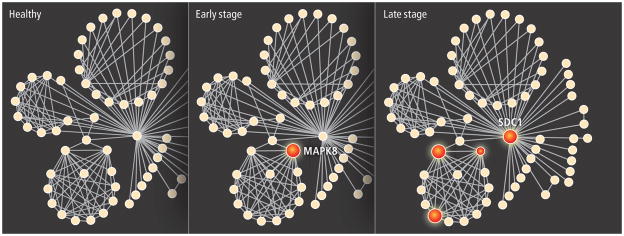
PROSTATE CELLS contain groups of proteins (solid circles) that interact (lines) with one another in small networks; changes in cellular levels of certain proteins accompany a shift from health to disease. Early-stage prostate cancer cells show a rise in levels of MAPK8, a protein known to regulate cell movement. In late-stage cancer cells, levels of SDC1 are 16 times higher than in early-stage cells. Relative amounts of these two proteins can offer diagnostic clues to the presence and progression of disease.
